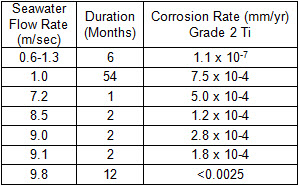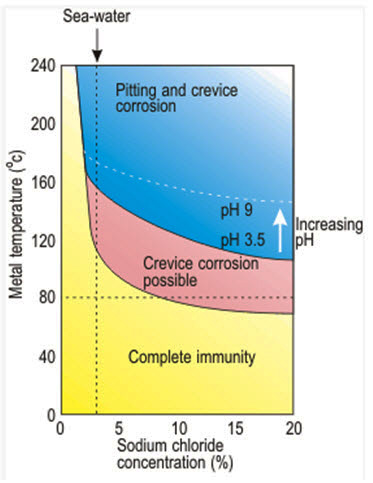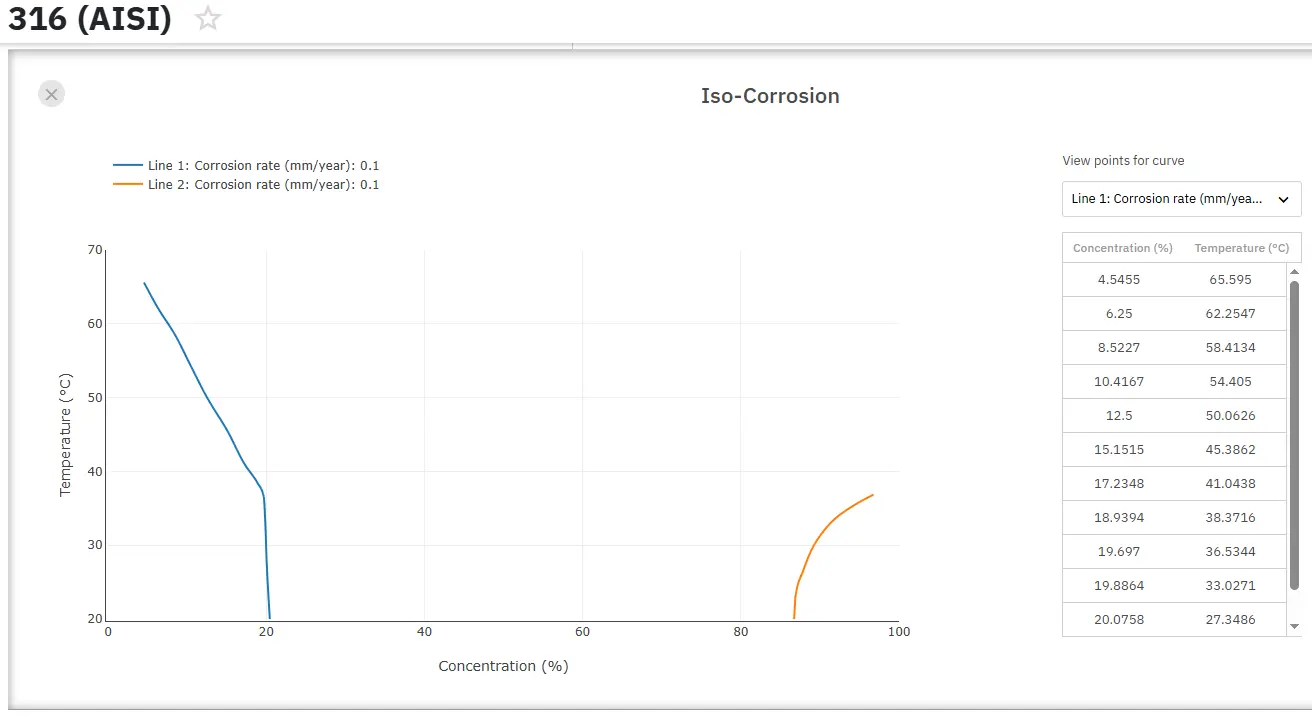Corrosion of Titanium Alloys: Part Two
Abstract
In general titanium has excellent resistance against corrosion but this does not mean it is infallible and susceptibility still remains to a range of corrosive forces.
The main corrosion areas to be considered when dealing with titanium alloys are erosion corrosion, stress corrosion cracking, corrosion fatigue, and crevice corrosion.
Erosion Corrosion
Titanium has the ability to resist erosion by high velocity seawater. Velocities as high as 120 ft./sec. cause only a minimal rise in the erosion rate. The presence of abrasive particles, such as sand, has only a small effect on the corrosion resistance of titanium under conditions that are extremely detrimental to copper and aluminum base alloys. Titanium is considered one of the best cavitation-resistant materials available for seawater service.
Ti-3-2.5 shows excellent resistance to erosion in flowing seawater. Commercially pure titanium has been shown to be resistant to erosion in velocities up to 131 ft/sec (40 m/sec) even with 15 g/l of sand particles present. Ti-3-2.5 samples exhibited no signs of corrosion after a 30 day exposure in 320°F (160°C) flowing seawater with a flow rate of 10.2 ft/sec (3.1 m/sec).

Table 1: Corrosion Rate of Titanium Grade 2 Ti
Stress-Corrosion Cracking
Ti-3-2.5 shows excellent resistance to stress corrosion cracking (SCC) in hot chloride solutions. Grade 9 does not exhibit the kind of SCC problems which occur with higher strength titanium alloys and high oxygen commercially pure titanium.
Ti-3-2.5 U bend specimens have been tested for 440 days in boiling seawater without showing any signs of SCC. Samples run under the same conditions with 200 ppm of sulfide ion present in solution also showed no corrosion problems.
Corrosion Fatigue
Titanium, unlike many other materials, does not suffer a significant loss of fatigue properties in seawater. In fatigue- limited applications, Boiler Code criteria or actual in situ fatigue testing should be considered.
Crevice Corrosion
Titanium alloys may be subject to localized attack in tight crevices exposed to hot (>70°C) chloride, bromide, iodide, and fluoride, or sulfate-containing solutions. Crevices can stem from adhering process stream deposits or scales, metal-to-metal joints (for example, poor weld design or tube-to-tube sheet joints), and gasket-to-metal flange and other seal joints. Titanium alloys generally exhibits superior resistance to crevice corrosion as compared to stainless steel and nickel-base alloys.
In the chemical process industry and sea water desalination, crevice corrosion is the limiting factor for the application of titanium. Concentrated brines at high temperature and low pH values are characteristic of such media, where crevice corrosion is the predominant corrosion mechanism for titanium. Critical temperatures for the onset of crevice corrosion on Ti are thought to be above 80°C. In rare cases, crevice corrosion has been reported at lower temperatures, as for example for the alloy Ti-6Al-4V at 50°C in saturated NaCl solution (300 g/L as compared to 9 g/L for Ringer solution), and at pH 4.
Another case was reported for CP titanium in NaCl solution (60 g/L; pH6) under argon atmosphere. In this test, Ti specimens were exposed in the form of a compressed sandwich assembly, tightly sealed to styrene-acrylic-copolymer, into which NaCl crystals were embedded. In spite of these examples of deviations from the 80°C rule, it is still correct to assume that crevice corrosion will not occur under in vivo conditions.
On the one hand, the test conditions for the experiments described above are not comparable to those found in physiological systems: on the other hand, experience teaches us that crevice corrosion can start only if an acidic electrolyte (Ph<2) can form inside the crevice. The formation of such toxic conditions is not possible at the interface of titanium – this is a vital tissue.
Crevice corrosion of unalloyed titanium may occur in seawater at temperatures above the boiling point. TIMETAL Code-12 (Grade 12) and TIMETAL 50A Pd (Grades 7 and 16) and 35A Pd (Grades 11 and 17) offer resistance to crevice corrosion in seawater at temperatures up to 500°F (260°C).

Figure 2: Influence of temperature, concentration and pH on crevice and pitting corrosion of commercially pure titanium in sea water and sodium chloride brines
En savoir plus
Accédez immédiatement à des données précises en corrosion !
Total Materia Horizon contient le comportement en corrosion et des informations sur les propriétés pour des centaines de milliers de matériaux, dans plus de 2000 milieux corrosifs.

Profitez d’un compte d’évaluation GRATUIT sur Total Materia Horizon et rejoignez notre communauté qui compte plus de 500.000 utilisateurs dans plus de 120 pays.